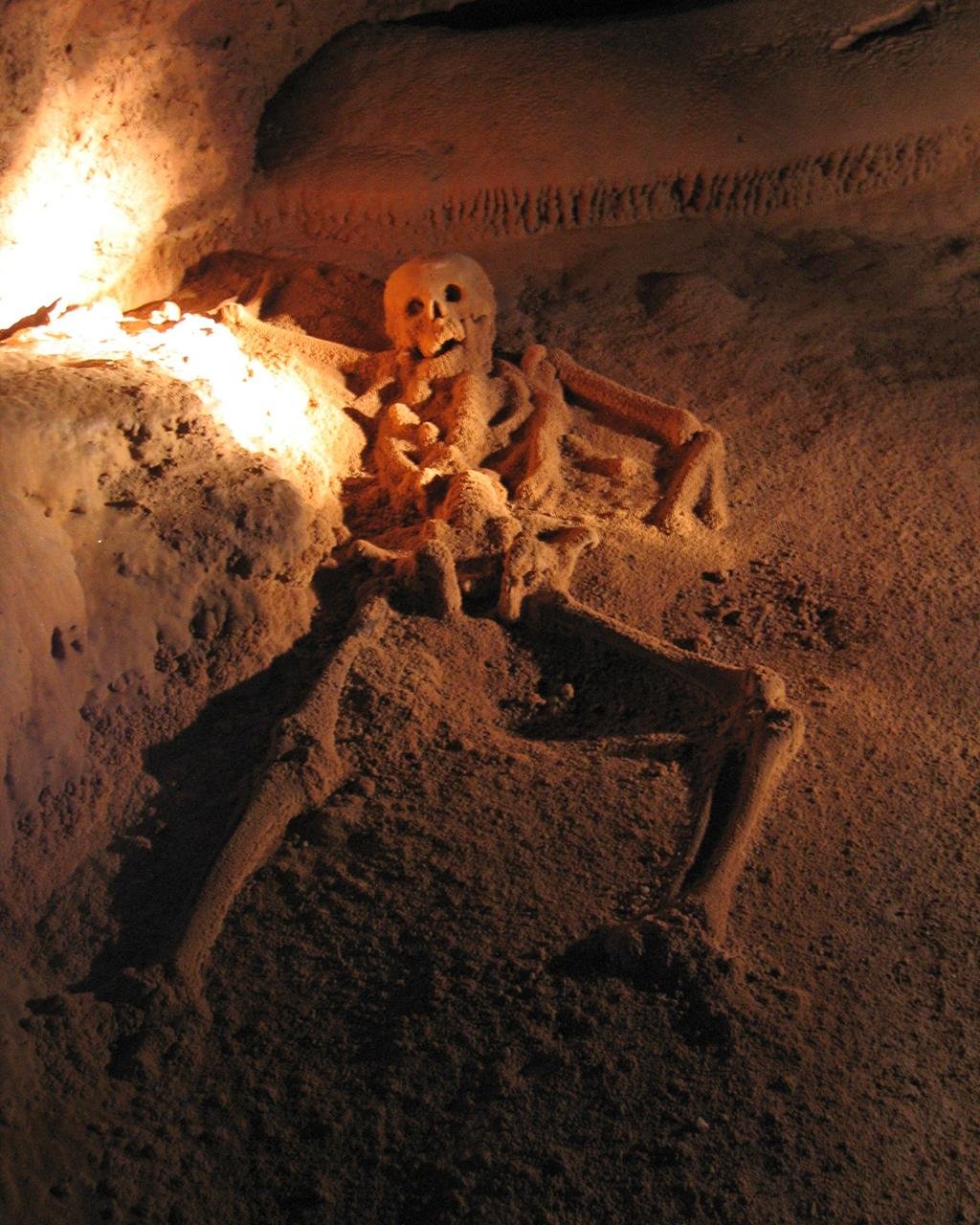In a flooded cave in the north of Guatemala, archaeologists discovered gruesome evidence of human sacrifice rituals among the ancient Maya. Under the ancient city of Dos Pilas, the location known as Cueva de Sangre, or “Blood Cave,” contains over a hundred fragments of human remains—a significant number of which show traces of violent trauma—dating to nearly 2,000 years ago.
 PH๏τo of a Maya sacrificial victim inside Actun Tunichil Muknal cave in Belize. The skeleton is popularly known as the “Crystal Maiden.” Credit: Peter Andersen, CC BY-SA 3.0
PH๏τo of a Maya sacrificial victim inside Actun Tunichil Muknal cave in Belize. The skeleton is popularly known as the “Crystal Maiden.” Credit: Peter Andersen, CC BY-SA 3.0
The cave was first documented in the early 1990s as part of a broader survey of underground chambers used by the Maya between 400 BCE and 250 CE. But only recently has serious research begun to analyze the macabre remains that lie scattered across its floor. Archaeologists now believe the cave was a ritual center for sacrificial offerings intended to appease the Maya rain god, Chaac.
In a recent presentation at the Society for American Archaeology’s yearly meeting, California State University, Los Angeles bioarchaeologist Michele Bleuze unveiled new data from her team’s ongoing research. “The emerging pattern that we’re seeing is that there are body parts and not bodies,” Bleuze told Live Science. “In Maya ritual, body parts are just as valuable as the whole body.”
 View of the Dos Pilas, a Late Classic Maya archaeological site in Guatemala, central plaza. Credit: Simon Burchell, CC BY-SA 3.0
View of the Dos Pilas, a Late Classic Maya archaeological site in Guatemala, central plaza. Credit: Simon Burchell, CC BY-SA 3.0
Rather than traditional burials, the adult and juvenile bones appear to have been purposefully dismembered and placed in specific arrangements. For instance, researchers discovered four neatly stacked skull caps in one of the cave chambers. The presence of ritualistic objects such as red ochre and obsidian blades—commonly used in Maya rites—also suggests the spiritual purpose of the site.
Forensic anthropologist Ellen Fricano of Western University of Health Sciences analyzed some of the bones and confirmed multiple instances of trauma that occurred around the time of death. A forehead fragment had sharp-force marks, which were likely made with a beveled-edged weapon like a hatchet. A child’s hip bone had a nearly identical wound, again suggesting intentional violence.
 Earthenware effigy urn (incense burner) depicting the Maya rain god Chaac, 12th–14th century. Credit: Leonard G
Earthenware effigy urn (incense burner) depicting the Maya rain god Chaac, 12th–14th century. Credit: Leonard G
The physical layout of the cave also plays a significant role in its ritual importance. Open only during Guatemala’s dry season, March to May, Cueva de Sangre is usually underwater for the rest of the year. This periodic availability coincides with a special date on the Maya ritual calendar: May 3, the Day of the Holy Cross. Still celebrated by modern Maya communities, this day involves rain prayers and a prosperous harvest, conducted in caves regarded as sacred openings to the spiritual world.
Scholars believe the timing of the sacrifices was no coincidence. With the rainy season approaching, the Maya likely invoked Chaac, offering human body parts in an attempt to ensure rainfall and agricultural abundance.
 Entrance to one of the caves used by the Maya at the Dos Pilas archaeological site. Credit: Noche de la pena, CC BY-SA 3.0
Entrance to one of the caves used by the Maya at the Dos Pilas archaeological site. Credit: Noche de la pena, CC BY-SA 3.0
Although human sacrifice has long been known in Maya society, this site gives us a vivid and well-preserved glimpse of how these rituals were performed. Unlike respectful burials elsewhere in the Maya world, the bones here suggest that sacrifice was a performative ritual, meant to be seen by gods, not hidden from human eyes.
Research into the bones continues. Bleuze and her team plan to conduct ancient DNA and isotope analysis to determine the people’s origins, health, and affiliations.





